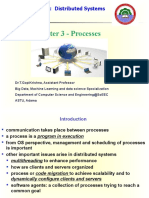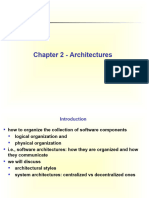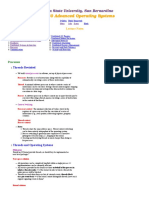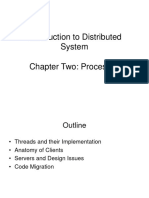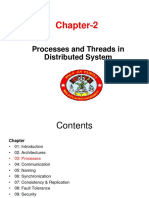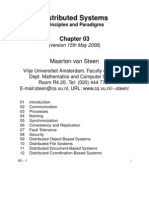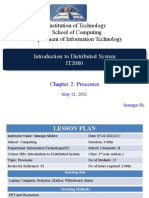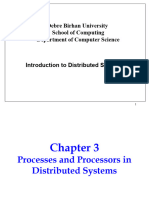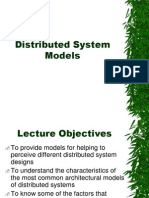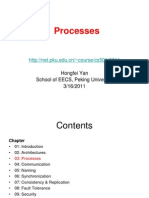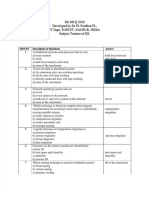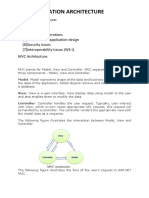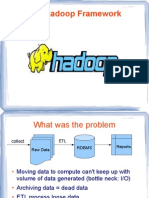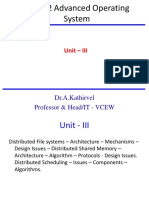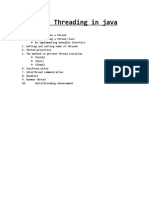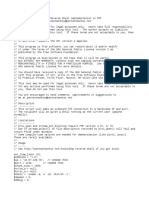0% found this document useful (0 votes)
23 views40 pagesChapter 3-Processes
Chapter 3 of CSE 5307 discusses processes in distributed systems, focusing on communication, multithreading, and server organization. It covers thread implementation, the anatomy of clients, general design issues for servers, and code migration, emphasizing the importance of performance, distribution transparency, and resource management. The chapter outlines various models of code migration and the challenges posed by heterogeneous systems.
Uploaded by
Swunet mosieCopyright
© © All Rights Reserved
We take content rights seriously. If you suspect this is your content, claim it here.
Available Formats
Download as PDF, TXT or read online on Scribd
0% found this document useful (0 votes)
23 views40 pagesChapter 3-Processes
Chapter 3 of CSE 5307 discusses processes in distributed systems, focusing on communication, multithreading, and server organization. It covers thread implementation, the anatomy of clients, general design issues for servers, and code migration, emphasizing the importance of performance, distribution transparency, and resource management. The chapter outlines various models of code migration and the challenges posed by heterogeneous systems.
Uploaded by
Swunet mosieCopyright
© © All Rights Reserved
We take content rights seriously. If you suspect this is your content, claim it here.
Available Formats
Download as PDF, TXT or read online on Scribd
/ 40

